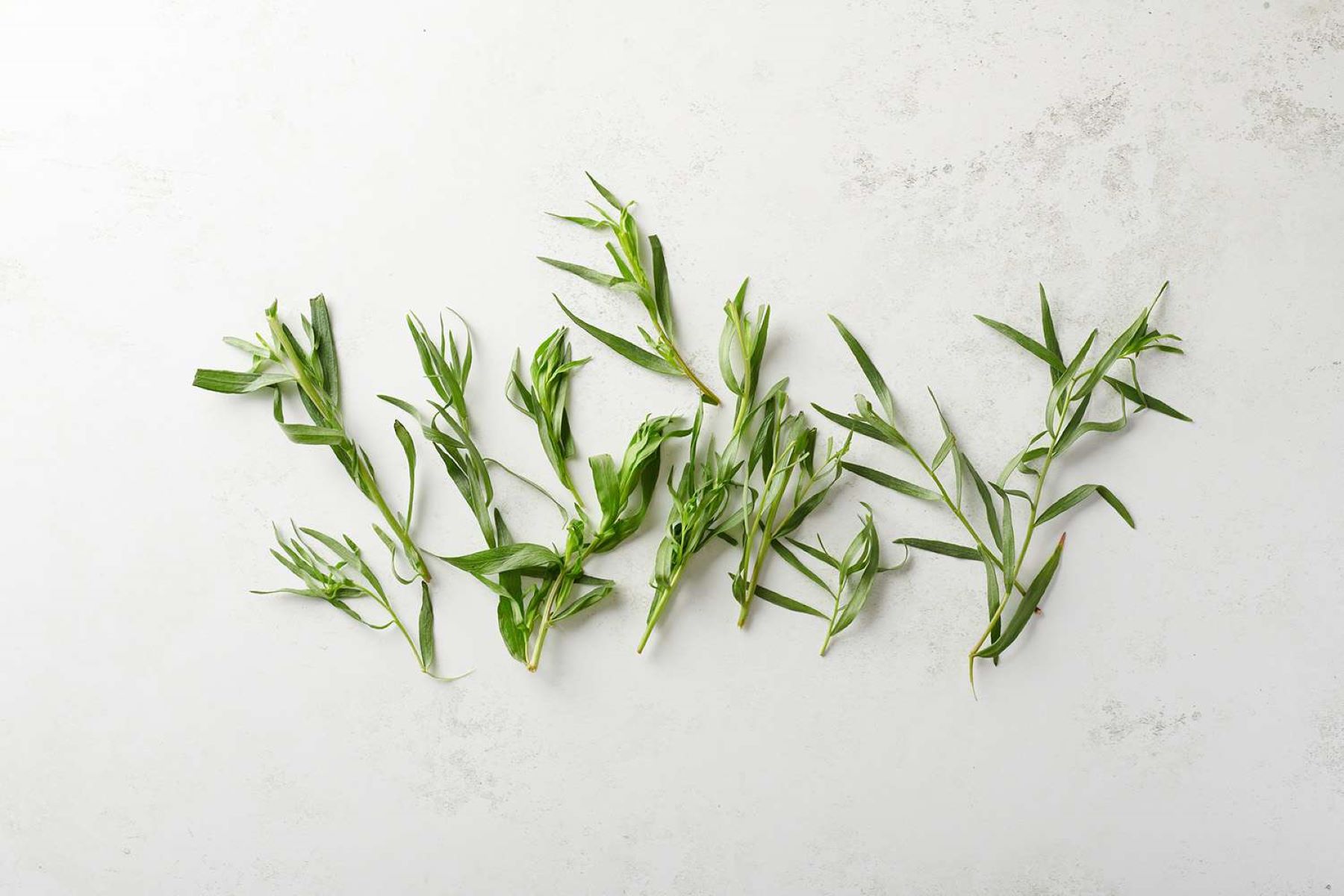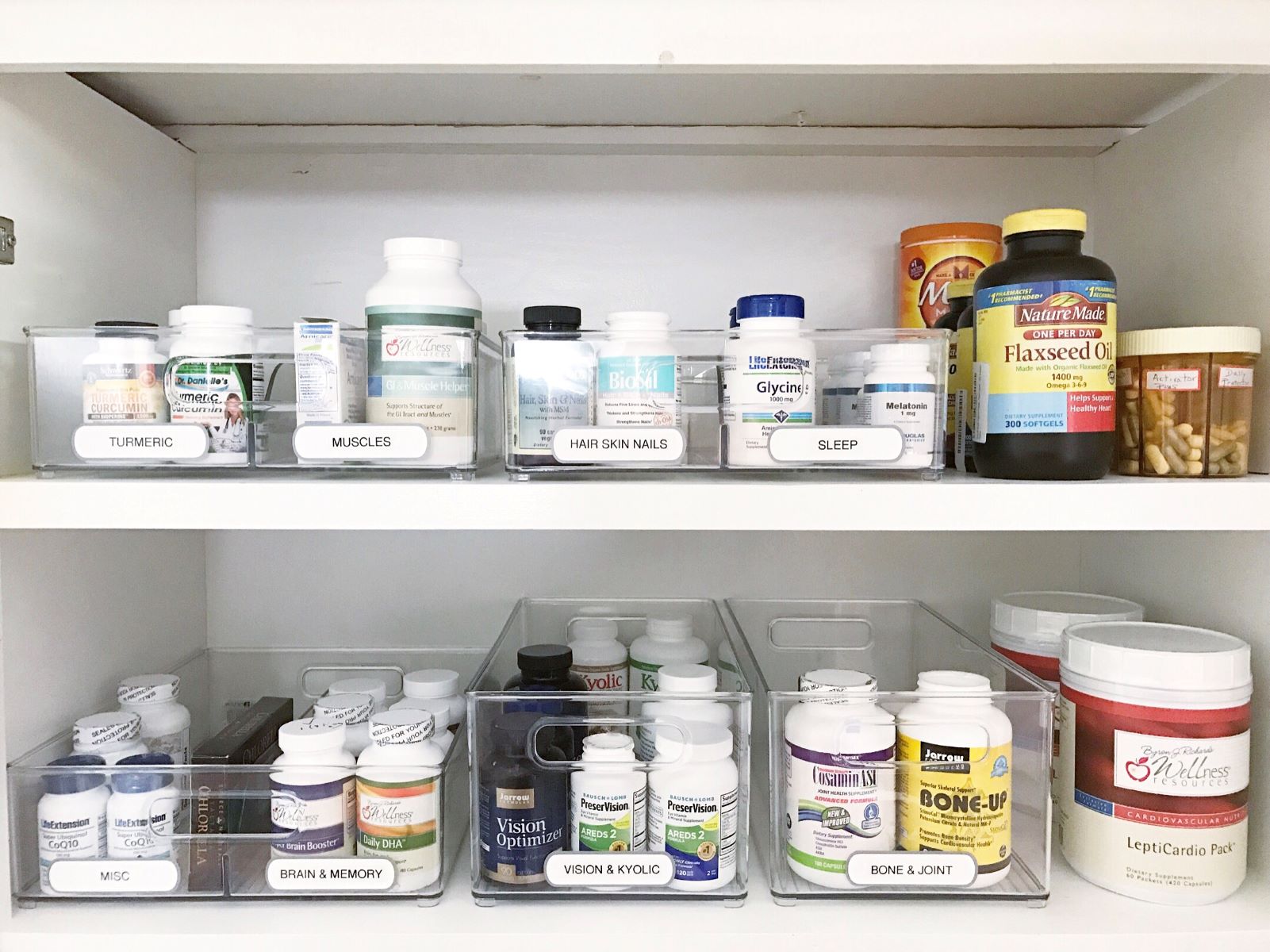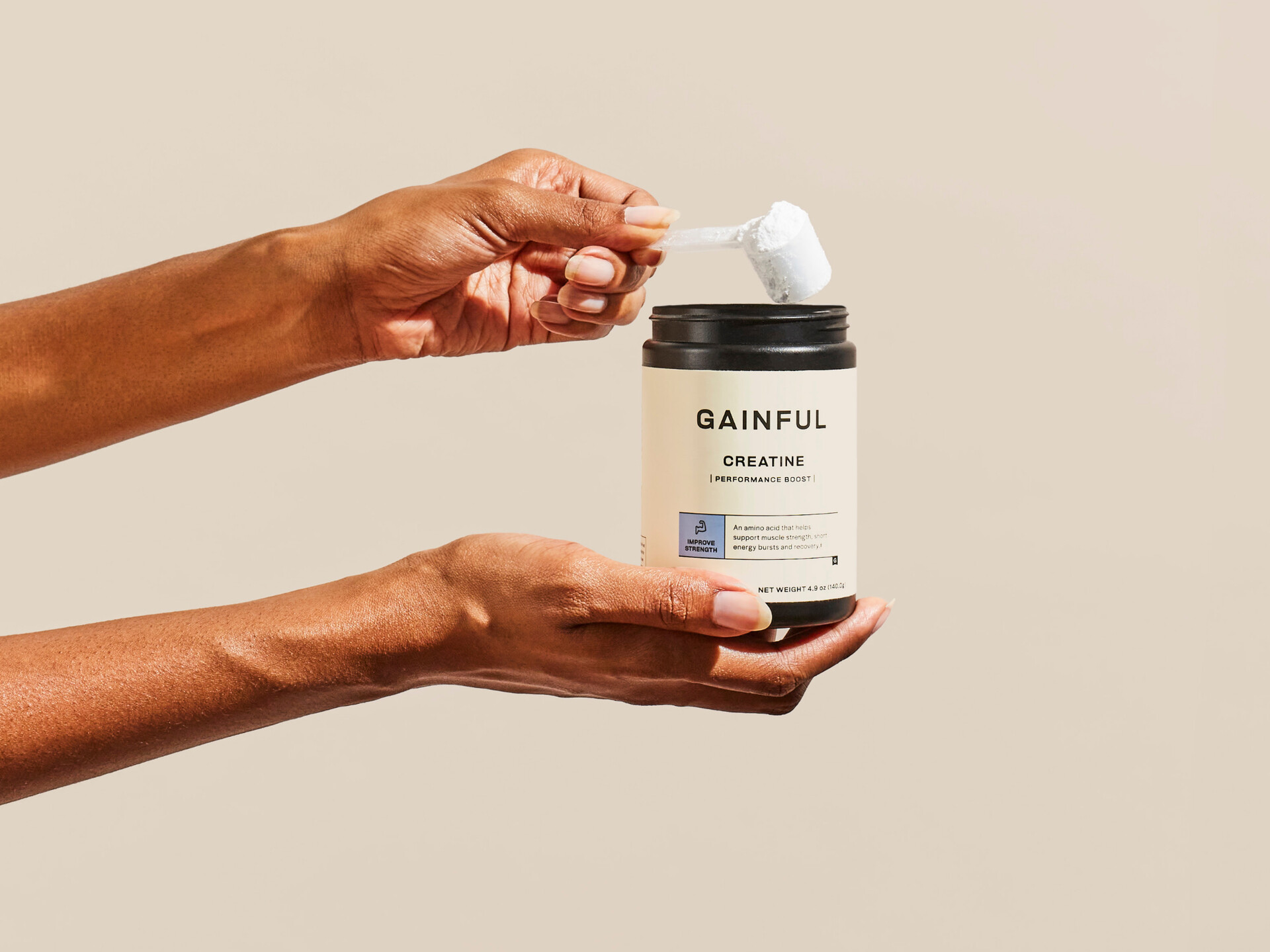

Articles
How To Store Tarragon
Modified: January 8, 2024
Learn the best methods for storing tarragon in this informative article. Discover how to preserve its flavor and freshness for longer periods.
(Many of the links in this article redirect to a specific reviewed product. Your purchase of these products through affiliate links helps to generate commission for Storables.com, at no extra cost. Learn more)
Introduction
Tarragon is a versatile and flavorful herb commonly used in culinary dishes around the world. Known for its distinctive anise-like taste, tarragon adds depth and complexity to recipes, making it a popular choice among chefs and home cooks alike. However, like other fresh herbs, tarragon has a relatively short shelf life and can quickly lose its flavor and aroma if not stored properly.
In order to get the most out of your tarragon and ensure its freshness and quality, it is crucial to understand the best storage practices. By following the right techniques, you can enjoy the delightful taste of tarragon in your recipes for an extended period. This article will guide you through the different methods and conditions for properly storing tarragon, so you can maximize its shelf life and enhance your culinary creations.
Key Takeaways:
- Proper storage of tarragon is essential to preserve its flavor, aroma, and nutritional value. Whether refrigerating, freezing, or infusing in oil, following the right storage techniques ensures a longer shelf life and optimal culinary enjoyment.
- By implementing proper storage methods such as refrigeration, freezing, or drying, tarragon’s freshness and flavors can be extended, reducing food waste and ensuring a readily available supply for enhancing a wide range of culinary creations.
Read more: How To Store Fresh Tarragon
Why Is Proper Storage Important for Tarragon?
Proper storage is essential for preserving the flavor, texture, and nutritional value of tarragon. When stored incorrectly, tarragon can quickly deteriorate, losing its vibrant color, aroma, and taste.
One of the main reasons to store tarragon properly is to maintain its flavor. Tarragon contains a volatile compound called estragole, which gives it its distinct anise-like flavor. However, this compound is highly sensitive to heat, light, and air. Improper storage can lead to the evaporation and degradation of estragole, resulting in a bland and less flavorful herb.
Furthermore, exposure to light and air can cause oxidation, leading to the breakdown of vitamins and other beneficial compounds in tarragon. By storing tarragon correctly, you can preserve its nutritional content, including vitamins A, C, and B6, as well as minerals like iron, calcium, and magnesium.
Proper storage also helps prevent the growth of mold, bacteria, and other pathogens that can contaminate tarragon. These microorganisms thrive in moist and warm environments, and if tarragon is not stored in suitable conditions, it can become a breeding ground for harmful bacteria. Consuming contaminated tarragon can lead to food poisoning and other health issues.
Lastly, storing tarragon correctly can save you money and reduce food waste. When tarragon goes bad or loses its flavor, you may need to discard it and purchase a new batch. By utilizing proper storage techniques, you can extend the shelf life of tarragon, allowing you to enjoy its benefits for a more extended period, while also minimizing food waste.
In summary, proper storage is crucial for maintaining the flavor, nutritional value, and safety of tarragon. By following the correct storage methods, you can preserve the aromatic qualities and taste of this herb, ensuring that it remains fresh and ready to elevate your culinary creations.
Best Storage Conditions for Tarragon
To keep tarragon fresh and flavorful, it is important to store it under the right conditions. Here are the best storage practices for tarragon:
- Temperature: Tarragon prefers cool temperatures. The ideal range for storing tarragon is between 32°F (0°C) and 40°F (4°C). Avoid exposing tarragon to extreme temperatures, as this can cause wilting and flavor loss.
- Moisture: Excess moisture can cause tarragon to rot. It is vital to keep the leaves dry before storing them. Avoid washing tarragon until you’re ready to use it. If the leaves are wet, gently pat them dry before storage.
- Humidity: Tarragon prefers low humidity levels. High humidity can lead to mold growth and spoilage. Store tarragon in a dry environment to maintain its freshness.
- Airflow: Proper airflow is essential to prevent the buildup of ethylene gas and maintain the herb’s freshness. Avoid storing tarragon in airtight containers or plastic bags. Instead, use loose wrapping or a perforated bag to allow some airflow.
- Light: Light can cause tarragon to lose its vibrant green color and flavor. Store tarragon in a dark or opaque container to protect it from light exposure.
By following these storage conditions, you can ensure that your tarragon stays fresh and flavorful for a longer period.
Using Fresh Tarragon
Fresh tarragon is a wonderful addition to a wide range of dishes, providing a distinct flavor and aroma. Here are some tips on how to make the most out of fresh tarragon:
- Flavor Enhancer: Tarragon can enhance the flavor of various culinary creations. It pairs exceptionally well with chicken, fish, eggs, vegetables, and creamy sauces. Add a few sprigs or chopped leaves of tarragon to your recipes to elevate the flavor profile.
- Soup and Stock: Tarragon can bring depth and complexity to soups, broths, and stocks. Add a few fresh springs to simmering liquids and let the flavors infuse.
- Sauces and Dressings: Fresh tarragon is a key ingredient in classic sauces like Béarnaise and Hollandaise. It also adds a delightful twist to salad dressings, marinades, and vinaigrettes.
- Herb Butter: Create a flavorful herb butter by combining softened butter with finely chopped tarragon. Use this compound butter to add a burst of flavor to dishes like grilled meats, roasted vegetables, or spread it on bread for a delicious herb-infused treat.
- Infused Vinegar or Oil: Make your own tarragon-infused vinegar or oil by placing fresh tarragon sprigs in a bottle and covering them with vinegar or oil of your choice. Allow it to sit for a week or two to infuse the flavors. This infused vinegar or oil can be used to add a hint of tarragon to dressings, marinades, and various dishes.
- Herb Salad: Combine fresh tarragon leaves with other herbs, such as basil, mint, or parsley, to create a flavorful herb salad. Toss the herbs with a simple vinaigrette and serve it as a refreshing side dish or as a topping for grilled meats or seafood.
Remember to use fresh tarragon sparingly as its robust flavor can overpower other ingredients. Start with a small amount and adjust according to your taste preferences. Enjoy the vibrant taste of fresh tarragon in your culinary creations!
Drying Tarragon for Long-term Storage
Drying tarragon is an excellent method to preserve its flavors for long periods, allowing you to enjoy its taste even when the fresh herb is not easily available. Here’s how to dry tarragon:
- Harvesting: Start by harvesting tarragon stems in the morning when the plant’s oils are at their peak. Choose healthy stems with vibrant green leaves.
- Rinsing and Drying: Gently rinse the tarragon stems to remove any dirt or debris. After rinsing, pat the stems dry with a clean towel or paper towel to remove excess moisture.
- Bunching: Tie the tarragon stems together at the base using a string or an elastic band. Create small bundles with 5-6 stems in each bundle.
- Hanging: Hang the bundles upside down in a cool, well-ventilated area away from direct sunlight. The drying process can take up to two weeks. Make sure the area is dry and free from any moisture or humidity.
- Monitoring: Regularly check on the tarragon bundles to ensure they are drying properly and not developing any mold or mildew. If you notice any signs of spoilage, discard the affected stems and continue drying the remaining ones.
- Crushing and Storing: Once the tarragon stems are fully dried, carefully remove the dried leaves from the stems. Crush the leaves by gently rubbing them between your hands or using a mortar and pestle. Place the crushed tarragon leaves in an airtight container, such as a glass jar, and store it in a cool, dark place.
Dried tarragon can be used as a seasoning in various dishes, including soups, stews, sauces, and marinades. However, it’s important to note that dried tarragon has a slightly different flavor than fresh tarragon. Adjust the amount according to your taste preferences when using dried tarragon in recipes.
By drying tarragon, you can enjoy its flavors and aromas throughout the year, ensuring that your culinary creations are infused with the unmistakable taste of this versatile herb.
Read more: How Long To Germinate Mexican Tarragon
Freezing Tarragon
Freezing is an excellent method for preserving the fresh flavors of tarragon for an extended period. Here’s how you can freeze tarragon:
- Preparation: Start by harvesting fresh tarragon leaves from the plant. Rinse the leaves under cold water to remove any dirt or debris. Pat them dry with a clean towel or paper towel.
- Chopping: Finely chop the tarragon leaves. Alternatively, you can leave them whole, depending on your preference.
- Flash Freeze: Spread the chopped tarragon evenly on a baking sheet lined with parchment paper. Place the baking sheet in the freezer and let the tarragon freeze for about 1 to 2 hours. This process, known as flash freezing, prevents the tarragon pieces from sticking together.
- Transfer to Containers: Once the tarragon is frozen, transfer the pieces into airtight containers or freezer bags. Squeeze out any excess air from the bags before sealing them. Label the containers or bags with the date for future reference.
- Freezing Time: Tarragon can be stored in the freezer for up to six months. However, for optimal flavor, it is best to use the frozen tarragon within three months.
When you need to use frozen tarragon, simply remove the desired amount from the freezer, thaw it, and add it directly to your recipe. It is important to note that the texture of thawed tarragon may become slightly softer than fresh tarragon. However, the flavor and aroma should remain intact.
Frozen tarragon can be used in a variety of dishes, including soups, stews, sauces, marinades, and dressings. It adds a burst of flavor to your recipes, even when fresh tarragon is not readily available.
By freezing tarragon, you can enjoy its delightful taste year-round, ensuring that your culinary creations are infused with the distinct flavor of this versatile herb.
Store fresh tarragon by wrapping it in a damp paper towel and placing it in a plastic bag in the refrigerator. It should stay fresh for up to a week.
Storing Tarragon in Oil
Storing tarragon in oil is a fantastic way to preserve its flavor and aroma while infusing the oil with its unique taste. Here’s how you can store tarragon in oil:
- Harvesting: Start by harvesting fresh tarragon leaves from the plant. Rinse the leaves under cold water to remove any dirt or debris. Pat them dry with a clean towel or paper towel.
- Preparation: Finely chop the tarragon leaves to release their aromatic oils.
- Choosing an Oil: Select a high-quality oil with a neutral flavor, such as olive oil or grapeseed oil. Make sure the oil is fresh and of good quality, as it will impact the final taste of the infused oil.
- Infusing: Place the chopped tarragon leaves into a sterilized glass jar or bottle. Pour the oil over the tarragon, ensuring that the leaves are completely submerged. Use a clean spoon or utensil to press down the leaves and remove any air bubbles.
- Sealing: Securely seal the jar or bottle with a tight-fitting lid. Store it in a cool, dark place away from direct sunlight.
- Infusion Time: Allow the tarragon to infuse in the oil for at least one week, preferably longer, to achieve a more pronounced tarragon flavor. The longer it infuses, the more intense the flavor will be.
When you’re ready to use the oil, strain out the tarragon leaves using a fine-mesh sieve or cheesecloth. The infused oil can be used in various culinary applications, such as dressings, marinades, sautés, and drizzling over finished dishes.
It’s important to note that storing tarragon in oil creates an environment conducive to bacterial growth. To minimize the risk of botulism, a dangerous foodborne illness, ensure that the infused oil is refrigerated and used within a week or stored in the freezer for longer-term storage. It’s essential to discard any oil that shows signs of spoilage or an off odor.
Storing tarragon in oil not only preserves the herb but also gives you a convenient and flavorful ingredient to enhance your culinary creations with a touch of tarragon goodness.
Properly Storing Tarragon in the Refrigerator
When it comes to storing tarragon, the refrigerator is a great option to help maintain its freshness and flavors for a longer period. Here are some tips for properly storing tarragon in the refrigerator:
- Preparation: Before storing tarragon, ensure that the leaves are dry. Excess moisture can lead to spoilage. Gently pat the leaves dry with a clean towel or paper towel.
- Trimming: Trim the stems of the tarragon before storing. Remove any yellowed or wilted leaves, as they can hasten the spoilage process.
- Water Method: One effective method to prolong the shelf life of tarragon in the refrigerator is to treat it like a bouquet of fresh flowers. Place the tarragon in a jar or glass of water, just like you would with flowers, and loosely cover it with a plastic bag. Change the water every two to three days to keep it fresh.
- Plastic Bag Method: Alternatively, you can loosely wrap the tarragon in a damp paper towel and place it in a perforated plastic bag. The damp paper towel helps to maintain moisture around the leaves while preventing direct contact, which can cause them to wilt.
- Refrigeration: Store the prepared tarragon in the vegetable drawer or a sealed container in the refrigerator. The optimal storage temperature for tarragon is between 32°F (0°C) and 40°F (4°C). This range helps to slow down the aging process and preserve the flavors.
Properly stored tarragon in the refrigerator can last up to a week, though it is best to use it as fresh as possible for optimal flavor. Check the tarragon regularly and discard any leaves that show signs of spoilage, such as wilting, discoloration, or an off smell.
Remember that tarragon stored in the refrigerator might lose a bit of its flavor intensity over time. Adjust the amount of tarragon used in recipes accordingly to suit your taste preferences.
By following these storage methods, you can enjoy the freshness and flavors of tarragon for an extended period, ensuring that you have this versatile herb on hand whenever you need it in your culinary creations.
Storing Tarragon in the Pantry or Cupboard
If you don’t have the option to store tarragon in the refrigerator, storing it in a pantry or cupboard can be a viable alternative. Here are some guidelines for storing tarragon in the pantry or cupboard:
- Preparation: Before storing tarragon, ensure that the leaves are dry. Excess moisture can lead to mold and spoilage. Gently pat the leaves dry with a clean towel or paper towel.
- Airtight Container: Transfer the tarragon leaves into an airtight glass container or a sealable plastic bag. The container or bag should be completely airtight to prevent moisture and air from entering, which can cause the tarragon to lose its flavors and become stale.
- Dark and Cool Location: Place the container or bag of tarragon in a cool and dark spot in your pantry or cupboard, away from direct sunlight. Heat, light, and humidity can accelerate the degradation of the herb.
- Temperature: The ideal temperature for storing tarragon in the pantry or cupboard is between 60°F (15°C) and 70°F (21°C). Avoid storing tarragon in an area that is too hot or prone to temperature fluctuations.
- Monitoring: Regularly check the tarragon for any signs of spoilage, such as wilting, discoloration, or an off smell. Discard any leaves that have gone bad to prevent them from affecting the rest of the tarragon.
- Shelf Life: When stored properly in a pantry or cupboard, tarragon can remain usable for up to six months. However, for the best quality and flavor, it is recommended to use it within three to four months.
It’s important to note that storing tarragon in the pantry or cupboard may not maintain its freshness and flavor as effectively as refrigeration. The herb may gradually lose some of its potency over time. Adjust the amount of tarragon used in recipes accordingly to suit your taste preferences.
By following these storage guidelines, you can still enjoy the benefits of tarragon even without refrigeration, ensuring that you have this versatile herb readily available in your pantry or cupboard for your culinary adventures.
Read more: How To Store Store-Bought Bread
Tips for Maximizing Tarragon’s Shelf Life
To get the most out of your tarragon and ensure its freshness and quality, here are some tips for maximizing its shelf life:
- Choose Fresh Tarragon: Select fresh tarragon with vibrant green leaves and a strong aroma. Avoid any wilted or discolored leaves as they indicate aging or spoilage.
- Handle with Care: Treat tarragon gently to prevent bruising and damage to the leaves. Rough handling can accelerate the wilting process.
- Keep Moisture at Bay: Excess moisture can cause tarragon to wilt and promote the growth of mold and bacteria. Ensure that the leaves are dry before storing them.
- Trimming: Remove any yellowed or wilted leaves from the tarragon bunch before storing. This helps to maintain the freshness of the remaining leaves.
- Store Just the Leaves: To extend the shelf life, it’s best to separate the tarragon leaves from the stems. The leaves tend to wilt faster, while the stems can retain moisture and accelerate spoilage.
- Properly Wrap or Bag: Whether using the water method in the refrigerator or storing in the pantry, ensure that the tarragon leaves are properly wrapped or sealed in an airtight container or bag to prevent moisture loss and preserve flavors.
- Regularly Check for Spoilage: Pay attention to the tarragon leaves during storage. Discoloration, wilting, or an off smell are signs of spoilage. Remove any spoiled leaves promptly to prevent them from affecting the rest of the tarragon.
- Use Fresh Tarragon First: Tarragon is best when used fresh, as its flavors are most potent. If you have a large batch, prioritize using the freshest tarragon first before resorting to the stored portions.
- Consider Alternative Storage Methods: If refrigerator space is limited, explore other storage options like freezing or storing tarragon in oil to extend its shelf life.
- Frequent Harvesting: For home gardeners, harvesting tarragon frequently helps to promote new growth and ensures a steady supply of fresh leaves throughout the growing season.
By implementing these tips, you can prolong the shelf life of tarragon and optimize its flavor and freshness, allowing you to enjoy the delightful taste of this versatile herb in your culinary endeavors.
Conclusion
Tarragon is a remarkable herb that adds a distinct flavor and aroma to a wide range of culinary dishes. To fully enjoy its benefits, proper storage is crucial. Whether you choose to store tarragon in the refrigerator, pantry, or freezer, following the appropriate storage techniques will help maintain its freshness, flavors, and nutritional value.
When storing tarragon, consider factors such as temperature, moisture, airflow, and light exposure. Refrigeration is an optimal choice for short-term storage, while freezing and drying methods can keep tarragon available for extended periods while preserving its flavors. Storing tarragon in oil or using water methods can also infuse the herb’s essence into your culinary creations.
Remember to handle tarragon with care, regularly inspect for any signs of spoilage, and prioritize using fresh tarragon first for the best flavor experience. Whether you grow your own tarragon or purchase it from a local market, utilizing these storage tips can prolong its shelf life and reduce food waste.
So, the next time you bring home a bunch of fresh tarragon, take the time to store it properly, whether it be in the refrigerator, freezer, or pantry. By doing so, you can ensure that the vivid green leaves, robust flavors, and delicate aroma of tarragon are readily available to enhance your culinary creations for weeks or even months to come.
Enjoy the delightful taste of tarragon in your recipes, knowing that with the right storage methods, you can always have this versatile herb at your fingertips to elevate your cooking to new heights.
Frequently Asked Questions about How To Store Tarragon
Was this page helpful?
At Storables.com, we guarantee accurate and reliable information. Our content, validated by Expert Board Contributors, is crafted following stringent Editorial Policies. We're committed to providing you with well-researched, expert-backed insights for all your informational needs.














0 thoughts on “How To Store Tarragon”